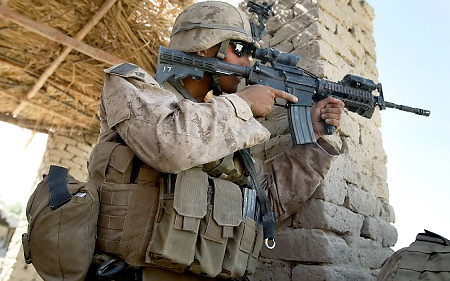
The book is based on an extraordinary diary compiled by a former SAS soldier, who began gathering information in 1946 when the regiment appeared to be heading for extinction.
The soldier -- whose identity, in common with the vast majority of SAS men, remains a secret -- decided to find and preserve for posterity whatever documentation he could before the regiment's story was lost for ever.
He collected his work in a single massive diary, measuring 43 centimetres by 30 centimetres (17 inches by 12 inches) and weighing more than 11 kilogrammes (25 pounds), and bound it in well-worn leather.
It contained photographs, operational orders and reports, all marked top secret, and cuttings from British and US newspapers, tracing the SAS's exploits in helping to defeat Nazi Germany.
Having created something unique, he stored it away in his home for more than 50 years and kept its existence secret, until he handed it over to the SAS shortly before his death.
Mike Sadler, an SAS veteran now in his 90s, said: "As soon as I saw it I knew it was an incredible document.
"The records in it don't exist anywhere else. From its contents to how it was pieced together, it was astonishing," he told the BBC.
The SAS was founded by a young British officer called David Stirling, who realised that small, highly-skilled raiding parties sent deep into enemy territory could help break the impasse in the Western Desert in Libya and Egypt.
He described the highly individual characters he handpicked for the unit as a "band of vagabonds".
It later fought in western Europe, was disbanded at the end of the war but reformed soon afterwards. In its modern guise, the SAS is believed to have played a key role in the wars in Iraq and Afghanistan and is thought to be active in Libya.
The regiment said it wanted to publish the diary now to keep alive the memory of the dwindling group of World War II veterans.
But with a price tag of £975 ($1,500, 1,100 euros), the book is one for diehard enthusiasts only.
---------------------------------------------------------------------------------
The soldier -- whose identity, in common with the vast majority of SAS men, remains a secret -- decided to find and preserve for posterity whatever documentation he could before the regiment's story was lost for ever.
He collected his work in a single massive diary, measuring 43 centimetres by 30 centimetres (17 inches by 12 inches) and weighing more than 11 kilogrammes (25 pounds), and bound it in well-worn leather.
It contained photographs, operational orders and reports, all marked top secret, and cuttings from British and US newspapers, tracing the SAS's exploits in helping to defeat Nazi Germany.
Having created something unique, he stored it away in his home for more than 50 years and kept its existence secret, until he handed it over to the SAS shortly before his death.
Mike Sadler, an SAS veteran now in his 90s, said: "As soon as I saw it I knew it was an incredible document.
"The records in it don't exist anywhere else. From its contents to how it was pieced together, it was astonishing," he told the BBC.
The SAS was founded by a young British officer called David Stirling, who realised that small, highly-skilled raiding parties sent deep into enemy territory could help break the impasse in the Western Desert in Libya and Egypt.
He described the highly individual characters he handpicked for the unit as a "band of vagabonds".
It later fought in western Europe, was disbanded at the end of the war but reformed soon afterwards. In its modern guise, the SAS is believed to have played a key role in the wars in Iraq and Afghanistan and is thought to be active in Libya.
The regiment said it wanted to publish the diary now to keep alive the memory of the dwindling group of World War II veterans.
But with a price tag of £975 ($1,500, 1,100 euros), the book is one for diehard enthusiasts only.
---------------------------------------------------------------------------------









 Home
Home Politics
Politics









